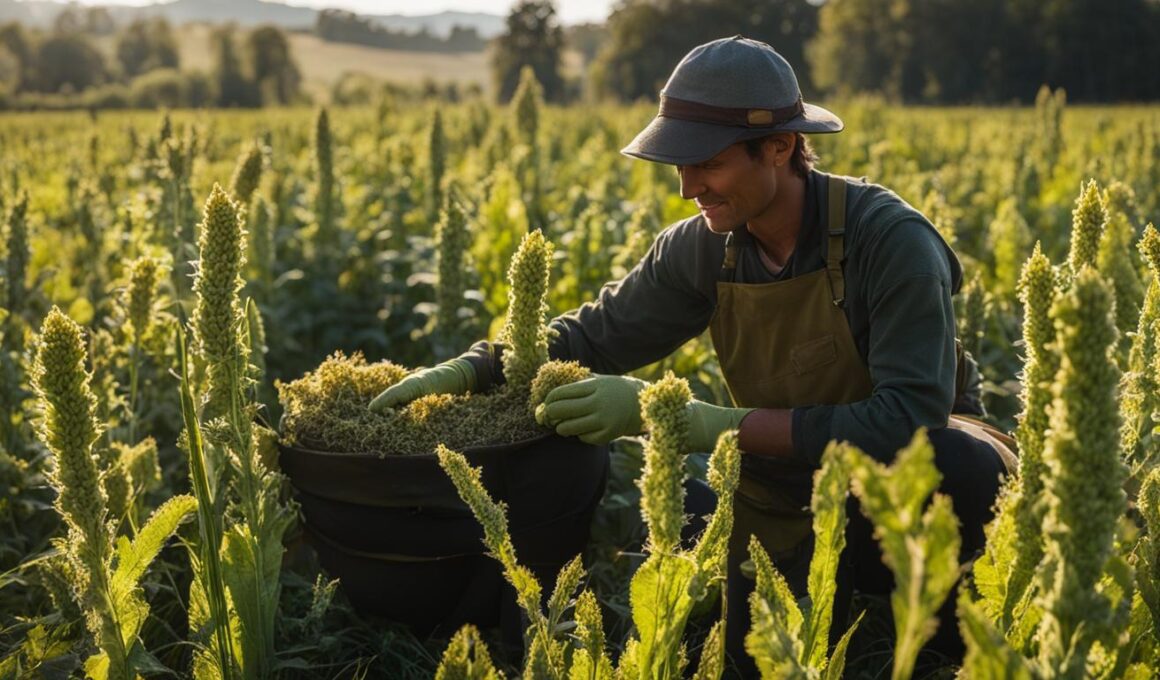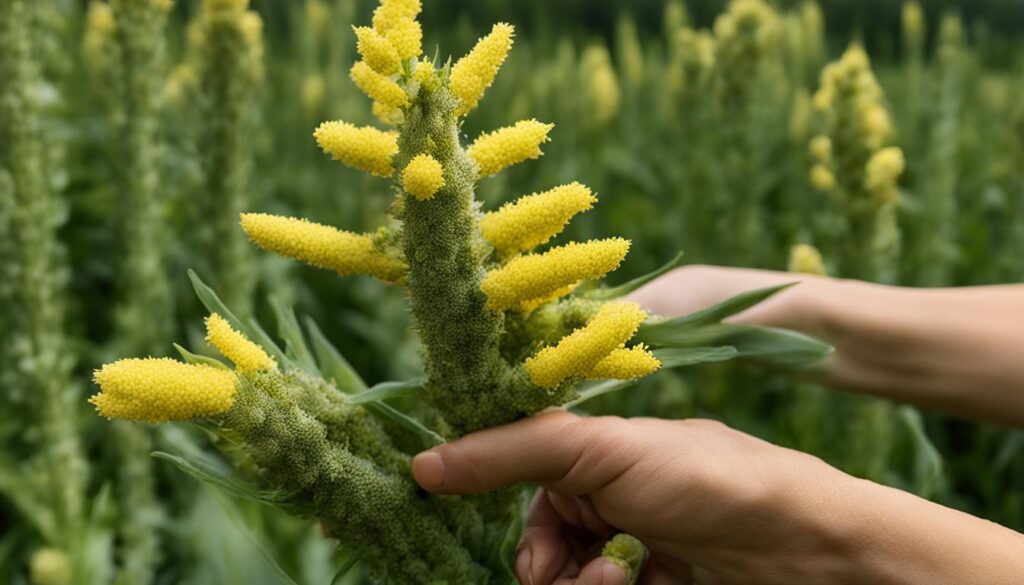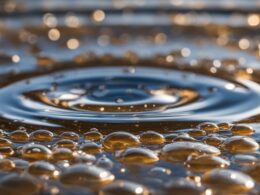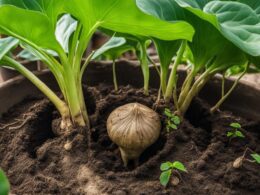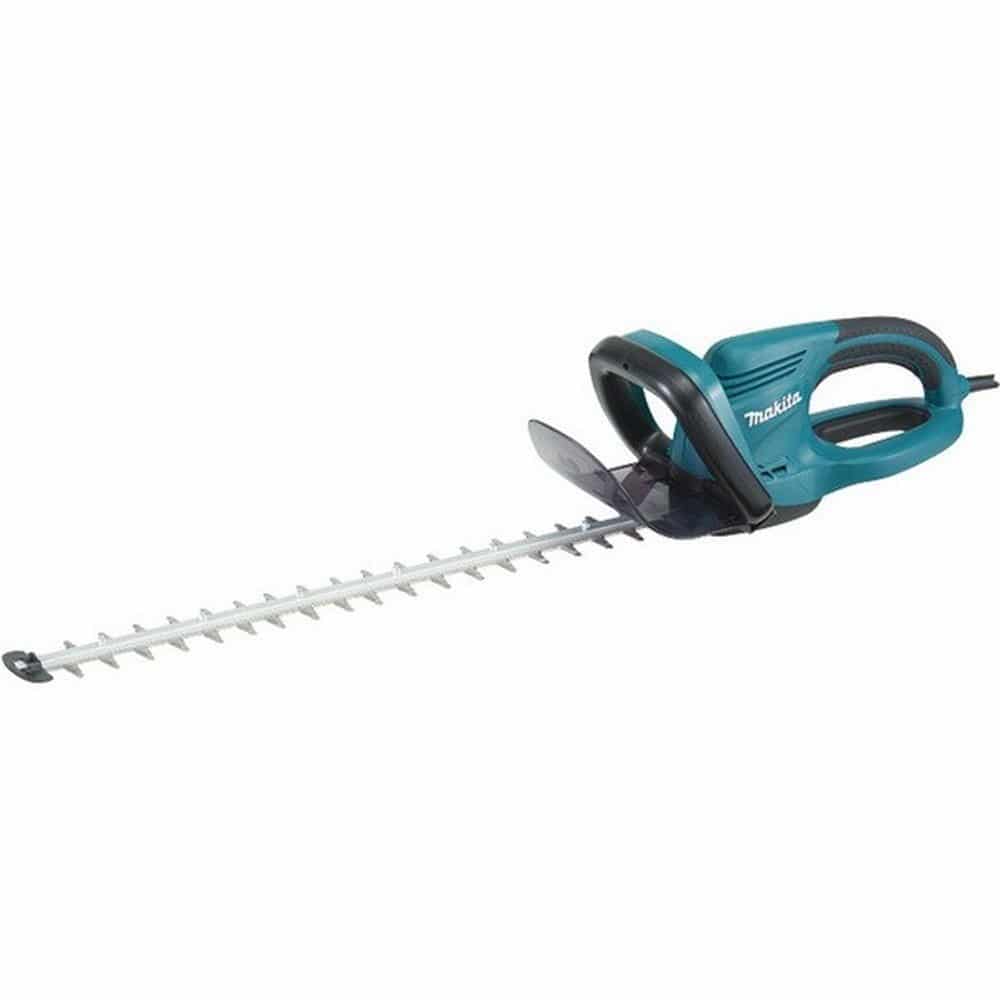Mullein is a versatile herb that can be harvested for its flowers, leaves, and roots. Whether you want to forage mullein in the wild or grow it from seed in your garden, learning proper harvesting techniques is crucial for optimal results.
Harvesting mullein sustainably ensures the plant’s longevity and availability for future use. By following sustainable harvesting practices, you can enjoy the benefits of this remarkable herb while preserving its natural habitats.
In this guide, we will explore the best techniques for harvesting mullein, whether you are foraging in the wild or cultivating it yourself. From understanding the ideal time to harvest to the correct methods of collection, we will cover everything you need to know to harvest mullein effectively.
Continue reading to discover the best practices for foraging mullein, growing it from seed, and sustainable harvesting techniques. By the end, you’ll be equipped with the knowledge and skills needed to effectively harvest mullein and unlock its extraordinary benefits.
Tips for Harvesting Mullein Seeds and Greens
Harvesting mullein seeds and greens is a rewarding process that can be done once the plant has completed its flowering stage. Mullein seeds can be collected and harvested for various purposes, and the greens can also be utilized in different ways. Here are some tips for effectively harvesting and using mullein seeds and greens:
1. Collecting Mullein Seeds
To collect mullein seeds, wait until the flowers have dried up and turned brown. This indicates that the seeds are mature and ready to be harvested. Use a pair of garden shears or scissors to cut the flower stalks from the plant. Place the stalks upside down in a paper bag or a clean container to catch the seeds that will naturally fall out as the stalks dry further.
2. Harvesting Mullein Greens
Mullein leaves can be harvested throughout the growing season, even before the plant flowers. Look for young and healthy leaves at the base of the plant. Use a pair of garden shears or scissors to carefully snip off the leaves, leaving the rest of the plant undisturbed. Be sure to leave enough leaves on the plant for it to continue growing and thriving.
3. Storing Mullein Seeds
Once you have collected the mullein seeds, store them in a cool and dry place to maintain their viability. Place the seeds in an airtight container or a sealed bag to prevent moisture and pests from damaging them. It’s a good idea to label the container with the date of collection and the specific variety of mullein seeds.
4. Using Mullein Seeds and Greens
Mullein seeds can be used for various purposes, such as planting new mullein plants in your garden or making herbal preparations. Crush the seeds to release their potent properties or grind them into a fine powder for easier incorporation into different recipes and remedies.
Mullein greens, on the other hand, can be used fresh in salads, added to soups, or cooked as a nutritious side dish. Their mild flavor and velvet-like texture make them a versatile ingredient in various culinary creations.
By following these tips, you can make the most out of your mullein harvest. Whether you want to preserve the seeds for future use, enjoy the nutritious greens, or explore the medicinal properties of this herb, harvesting mullein seeds and greens allows you to fully utilize the plant’s potential.
Conclusion
Mullein is a versatile herb known for its numerous benefits and uses. Whether you choose to harvest its flowers, leaves, or roots, learning proper techniques and sustainable foraging practices is key to making the most out of this valuable plant.
In addition to its medicinal properties, mullein offers a range of practical uses. From soothing respiratory ailments to relieving skin irritations, it has been used for centuries as a natural remedy. By incorporating mullein into your wellness routine, you can harness its power to enhance your health and well-being.
Harvesting mullein seeds and greens opens up even more possibilities. These parts of the plant can be collected after the flowering stage, providing additional benefits and culinary uses. Whether added to herbal tea blends or used in cooking, mullein seeds and greens offer a unique flavor profile and nutritional value.
When engaging in mullein harvest activities, it is crucial to correctly identify the herb and obtain permission to harvest from the area. This ensures responsible and sustainable practices. Whether you choose to grow mullein in your garden or venture into the wild to forage, this versatile herb offers a world of possibilities waiting to be explored.
Can Mullein and Hyacinth be Grown Together in the Same Garden?
Yes, mullein and hyacinth can be grown together in the same garden. Mullein is a hardy perennial that thrives in full sun, while hyacinth prefers partial shade. They both have different watering needs, so it is important to ensure proper watering for each plant to thrive. However, growing hyacinth in water at home is also a viable option for those without a garden.





